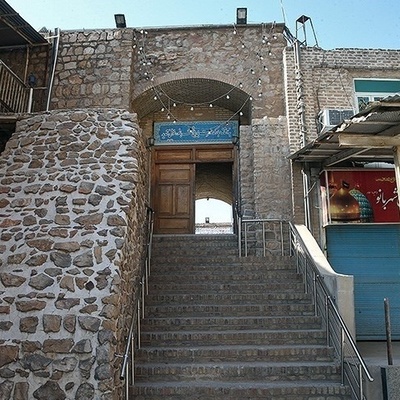SAEDNEWS: IRGC Navy Commander: Strait of Hormuz Open or Closed Based on National Leadership Decisions

According to the political service of Saed News, Commander of the IRGC Navy, Sardar Alireza Tangsiri, spoke about the resistance of the IRGC Navy against U.S. aggressions, stating:
"At that time, the most advanced weapon we had was the RPG, and later we were able to deploy the 107 weapon system. We had neither air cover nor extensive facilities, yet with this limited capacity, we engaged directly with U.S. forces for a year and a half—a one-sided war in which the IRGC Navy sacrificed martyrs."
He added: "It is important for our dear people to know that the IRGC Navy has presented 9 martyrs defending the shrine and resisting global arrogance in the Persian Gulf, led by Martyr Mahdavi and his courageous comrades. Of the nine blows struck against the U.S., six occurred during the Sacred Defense, at a time when the Americans, armed to the teeth with modern equipment, faced us but were defeated by the will of God."

Referring to the 16 Mehr operation, Sardar Tangsiri said: "In that operation, seven of our forces were martyred, and three were injured. One of the martyrs from that operation was later killed in the terrorist attack during the Ahvaz parade on 31 Shahrivar by agents of global arrogance. Among these martyrs are Martyr Mahdavi, Martyr Mobaraki, Martyr Shafiei, Martyr Tousali, Martyr Kord, and Martyr Mohammadi, each representing courage and faith in the face of the enemy."
Highlighting the strategic importance of the Strait of Hormuz, he stated: "This maritime passage is the 'artery of the world’s oil and gas,' and Iran has always protected it, never allowing it to be closed."
Recalling the region’s role in global energy supply, he warned about the consequences of uncontrolled presence of ships or nuclear systems in the Persian Gulf.
Sardar Tangsiri explained: "We have always considered this region a key strategic zone and protected it; we did not allow the Strait to be closed. But the question is, is it logical for the world to use this strait while we do not?"
Expressing concern over ships or submarines carrying nuclear fuel or sensitive systems entering the area, he emphasized: "In case of any incident resulting from such transfers, the damage would be widespread and long-lasting, and even coastal saltwater, which desalination plants rely on, could be unusable for years."
He noted that the Persian Gulf currents stabilize pollution and recalled an incident in the 1980s where a Japanese ship collided with an American submarine, causing oil leakage and environmental damage.
Sardar Tangsiri also criticized the presence of certain countries in the region as destabilizing, stating: "These countries create enemies to maintain their presence."
He emphasized that the Islamic Republic of Iran has never attacked another country in its 300-year history; it does not seek enmity if unprovoked but will defend its interests.
Regarding Iran’s stance on the Strait of Hormuz, he said: "Iran’s practical position is clear: to keep global energy arteries open and prevent any actions that threaten environmental safety and regional security. Decisions on opening or closing the strait are up to the country’s senior officials and depend on pressures on Iran’s exports."
Sardar Tangsiri continued: "The American warship USS Samuel Robert, destroyed by the IRGC Navy, was valued at $600 million. This was the third blow our forces delivered to the U.S.—the ship sank completely without any survivors."
He added: "During the continuation of the operation, two more of our forces were martyred on 29 Farvardin. The total number of martyrs in these battles reached nine, symbolizing the resilience of an oppressed yet powerful nation against global arrogance."
He described this success as part of the IRGC Navy’s resistance in defending national interests and confronting threats against the Islamic Republic of Iran.

Reflecting on the Sacred Defense era, he said: "At that time, Iran faced an eight-year invasion with extremely limited military resources. We were attacked with empty hands, had nothing, and nothing was provided to us. As the Supreme Leader rightly stated, even barbed wire was withheld from us."
Regarding today’s military achievements, he stated: "In the years following the war, the Islamic Republic has achieved self-sufficiency and even exports in critical military areas. Today, we are proud to be among the countries capable of exporting missiles, drones, and naval vessels."
On recent events in the Persian Gulf and the Sea of Oman, he emphasized: "Our country’s soldiers, including the Army Navy and IRGC Navy, stand against any threat or action against national interests and will defend this honor to the last breath."
He added: "The nation should know that their soldiers, both in the heroic Navy of the Army and the IRGC Navy, stand against anyone threatening the nation’s interests or creating problems in this sensitive region, defending this honor to the last breath."
Referring to the 12-day war, he noted: "The sacrifices and efforts of the Aerospace Forces and other units have not yet been fully recounted. These forces fought with great hardship and restored dignity."
He concluded: "We did not start the war, nor did we request its end; we continue to defend our path resolutely. The country stands firm."

